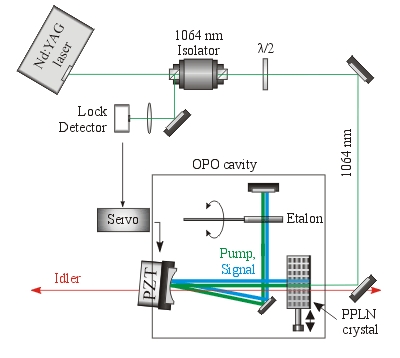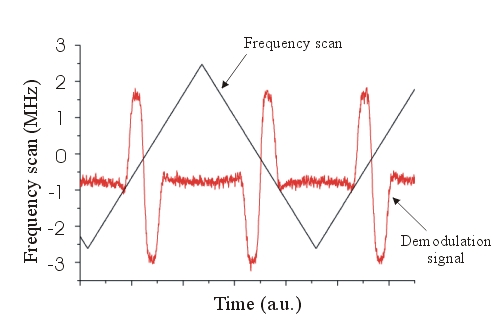OPOs for high-precision
spectroscopy and frequency metrology


E. Kovalchuk, D. Dekorsy, A. Lvovsky, A. Peters
OPOs possess a number of unique advantages in
comparison to other tunable continuous wave sources, such as wide emission
range, high stability, narrow linewidth and high output power. A particularly
valuable feature of cw OPOs is that their tuning range covers the
mid-infrared region around 3µm where fundamental vibrational modes of molecular
bonds containing hydrogen occur. These transitions are normally characterized
by a high dipole moment and therefore molecular gases exhibit strong absorption
even if present in low concentrations. By accessing these transitions via
techniques of Doppler-free spectroscopy OPOs have a potential as an analytical
spectroscopic tool of very high sensitivity.
Our goal is to develop and use an OPO suitable
for this application. We employ a singly-resonant OPO with the idler in the IR
range and an intracavity etalon to do Doppler-free spectroscopy of methane. To
date, we have completed our first measurements. We split the 3.39-mm idler output and direct it, via two counter-propagating beams (pump
and probe) into a methane cell. We use the frequency modulation method and by
scanning the OPO frequency in the range of 5 MHz we obtain the dispersion form
of a homogeneously broadened (300 kHz) methane line. This result is of great
importance as it is the first demonstration of using OPOs for Doppler-free
spectroscopy.
The next step is to further stabilize the OPO
to be able to access much narrower Doppler-free lines (several kHz). An
exciting opportunity for the future is to develop a new generation of frequency
standards by stabilizing the cw OPO’s frequency to narrowband molecular
transitions. These standards would be operating in the mid-IR range with an
expected frequency instability on the order of 10 Hz or less.
[paper]